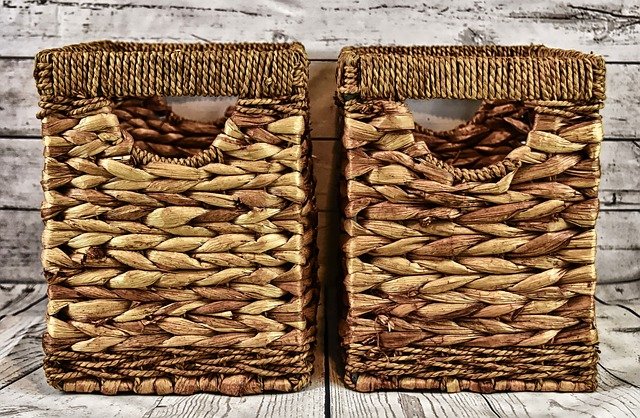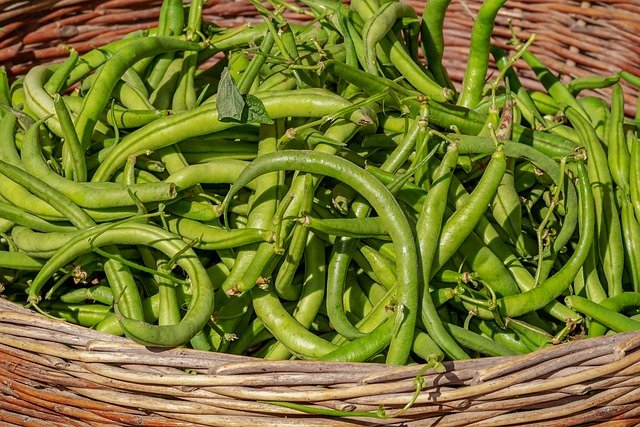Hi guys, it's another interesting contest week and I welcome you to my blog. Before we begin to address the questions, let's get a little understanding of beans.
Beans are a category of legumes belonging to "Fabaceae family". They are among the most nutritious and multifaceted sources of food globally.
Beans have high protein content, a good wellspring of complex carbohydrates, are abundant in protein, have low fat, are diverse in texture and flavors, rich in minerals and vitamins such as zinc, folate, potassium, and iron.
Beans contribute to heart health, may lower diuturnal diseases like diabetes and cancer, promote digestive health, are abundant in antioxidants, and support the management of healthy weight.
Black beans, navy beans, Chickpeas, Cannellini beans, Soybeans, Kidney beans, Pinto beans, Lima beans, Adzuki beans, and Great Northern beans are all types of beans.
The culinary uses of beans include soups and stews, stir-fries, casseroles, Baked goods like bean bread, salads, curries, and snacks like roasted beans.
Taking about the significance of beans, they are a basic source of protein, are vital crops for food security, have cultural significance in a lot of societies, and are versatile components in various cuisines.
Interestingly, beans are one of the oldest domesticated crops dating back 7,000 years. The world's largest producer of beans is India and beans are a major component of what is referred to as the "Three Sisters" method of farming (corn, beans, squash).
Now let's get to the questions...
What Are The Factors That Determine The Best Planting Time For Beans, And How Can Farmers Achieve This? |
|---|
The optimal planting time for beans is dependent on different factors which include the following:
Climatic Factors
- Temperature: The best temperature for the germination of beans is between 15⁰C and 30⁰C.
- Rainfall: Proportionate moisture is important for bean germination and growth.
- Sunlight: Full sun is required by beans to partial shade.
Soil Factors
- Soil Temperature: The optimal soil temperature for the germination of beans is between 18⁰C and 25⁰C
- Soil Moisture: A well-drained soil and proportionate moisture is ideal for bean planting.
- Soil pH: Slightly acidic soil is preferable for beans to neutral soil pH (6.0-7.0)
Regional Factors
- Latitude: Beans are categorically planted in regions that have temperate temperatures.
- Altitude: Regions with high altitudes need modified planting time.
- Seasonal Patterns: Planting should occur at the same time as the commencement of rainy season or spring.
Crop-Specific Factors
- Bean Variety: Varied varieties have sui generis planting requirements.
- Maturity Days: Planting Time is dependent on days to maturity.
- Growth Habit: Bush or pole beans have varied spacing as well as support requirements.
In Achieving Optimal Planting Time:
- Consult Local Weather Forecasts: Schedule planting around anticipated rainfall
- Utilize Soil Thermometers: Track the temperature of the soil.
- Carry Out Soil Test: Examine the soil to ascertain pH and nutrient levels.
- Select Suitable Varieties: Choose a bean variety that is adaptable to the local climate.
- Plant at Best Depth: Ensue advised planting depth.
- Oversee Soil Moisture: Modify planting time with regard to soil moisture.
- Put Irrigation Into Consideration: Adjunct natural rainfall with irrigation.
Technology and Tools
- Weather Apps: Make use of weather forecasting apps.
- Soil Sensors: Monitor soil temperature as well as moisture.
- Precision Agriculture: Utilize GPS and drones for best planting.
- Agricultural Calendars: Schedule planting in line with local climate.
Best Planting Times for Beans — General Guidelines
- Spring: Between late March and early May (Northern Hemisphere).
- Fall: Between late August and early October (Northern Hemisphere).
- Tropical Regions: Plant year-round, with consideration to rainy seasons.
Region-Specific Planting Times
- Nigeria: March to May or September to November.
- United States: April to May or September or October.
- Brazil: September to November or March to May.
There Are Different Bean Varieties Across The Globe, (E.g., Snap Beans, Kidney Beans, Black Eyed Beans), Do They Differ In Terms Of Growth Habits, Disease Resistance, And Market Demand? Tell Us. |
|---|
Yes, there are varieties of beans across the globe and they significantly vary in terms of growth habits, disease resistance, and market demand.
Growth Habits
- Bush beans: Have compact, upright growth e.g., 'Blue Lake, Kentucky Wonder'
- Pole beans: Is known for climbing, vining growth e.g., 'Romano, Kentucky Wonder Pole'
- Half-runner beans: This has a semi-climbing and intermediate growth e.g., 'Half-Runner Green Bean'
- Runner beans: This variety has long, trailing vines e.g., 'Scarlet Runner'
- Snap beans: These are bush or pole types and are harvested before maturity e.g., 'Snap Bush Blue Lake'
Disease Resistance
- Common Bean Mosaic Virus (CBMV) Resistance
- Powdery mildew resistance
- Bacterial blight resistance
- Bean rust resistance
- Root rot resistance
Regional Adaptation
- Tropical regions: This region requires heat-tolerant, disease-resistant varieties like 'California Early'
- Temperate regions: Needs cool-season, rust-resistant varieties such as 'Kentucky Wonder'
- High-altitude regions: For this region, cold-tolerant, drought-resistant varieties like 'Blue Lake' are needed
Varieties that have built-in disease resistance:
- Blue Lake - powdery mildew resistant
- California Early - CBMV resistant
- Kentucky Wonder - bean rust resistant
Market Demand
- Fresh market beans: Special attention given to appearance, flavor, and texture (e.g., snap beans)
- Processing beans: Concentration on yield, disease resistance, and processing ease (e.g., canned beans)
- Dry beans: Utilized for storage and subsequent consumption (e.g., kidney beans, black beans)
Popular varieties by market demand
- Fresh market: Snap Bush Blue Lake, Pencil Pod
- Dry beans: Kidney Bean, Black Bean
- Processing: California Early, Kentucky Wonder
Specialty Varieties
- Heirloom beans: One-of-a-kind flavors, colors, and textures, e.g., Jacob's Cattle.
- Organic beans: Cultivated without fertilizer or synthetic pesticides
- GMO beans: Genetically adjusted for improved traits, e.g., pest resistance
What Home Remedies Can Bean Farmers Use To Minimize Chemical/Inorganic Use While Controlling Pests? |
|---|
 Source Source |
|---|
Bean farmers can deploy several home remedies to reduce chemical/inorganic use while controlling pests:
Natural Pest Control Methods
- Neem oil: Mix about 2% to 3% neem oil with water and sprinkle on plants to curb aphids, whiteflies, and spider mites.
- Garlic spray: Mix pulverized garlic with water and spray on plants to repel pests.
- Soap solution: Blend 1 tablespoon of mild dish soap with 1 liter of water and spray on plants to restrain aphids, mealybugs, and spider mites.
- Cayenne pepper: Spray cayenne pepper around plants, this deters pests.
- Diatomaceous earth: This natural powder can be used to curb slugs, insects, and snails.
Organic Traps
- Agglutinative traps: Use adhesive tape or glue to trap aphids, whiteflies, and other flying pests
- Pitfall traps: Make a shallow pit and fill it with soapy water to trap slugs and snails.
- Yellow traps: Use yellow-colored traps to lure and ensnare aphids and whiteflies.
Companion Planting
- Planting marigolds with beans helps to repel nematodes and other pests.
- Planting basil with beans repels aphids and other pests.
- Plant nasturtiums with beans are ideal for repelling aphids, whiteflies, and other pests.
Crop Rotation and Sanitation
- Rotate beans with other crops to stop pest cycles
- Evacuate weeds and debris to reduce pest habitats
- Get rid of infested plants to stop the spread of pests
Biological Control
- Encouraging beneficial insects like ladybugs, and lacewings will help in the control of pests
- Parasitic wasps can be used to control aphids and other pests
- Beneficial nematodes can be utilized to control grubs and other soil pests*
Home-Made Pesticides
- Pyrethrin spray: Blend pyrethrin powder with water to curb aphids, whiteflies, and other pests
- **Nicotine sulfate: *Combine nicotine sulfate with water to restrain aphids and other pests.
- Ryania powder: Using ryania powder mixed with water helps in the control of aphids and other pests.
Resistant Varieties
- Cultivate bean varieties resistant to particular pests (e.g., bean rust, powdery mildew)
- Make use of breeding lines alongside built-in pest resistance.
Integrated Pest Management (IPM)
- Frequently monitor the field for pest presence
- Utilize a merger of control methods such as cultural, biological, and chemic.
- Keep record of pest control for future reference
How Do We Store Bean In Our Homes To Maintain Their Quality And Shelf Life? |
|---|
 Source Source |
|---|
Suitable storage of beans at home helps in maintaining their quality and shelf life. Here are some tips:
General Storage Guidelines
- Cool, dry place: Store beans in a well-ventilated region that have low or no humidity
- Airtight containers: Glass, plastic, or metal containers that have tight-fitting lids should be used
- Clean and dry beans: See to it that beans are kept from moisture and debris
- Protect from light: *Keep beans away from direct sunlight.
Storage Options
- Glass jars that have lids
- Plastic containers that have tight-fitting lids
- Use of mylar or airtight bags
- For larger quantities of beans, buckets with lids are ideal
- Mason jars that have oxygen absorbers*
Specific Storage Tips
- Dry beans:
- Keep in airtight containers
- Store in a cool, dry place (60 to 70⁰F/15 to 21⁰C)
- Shelf life: 12 to 18 months
- Canned beans:
- Preserve in a cool, dry place
- Keep away from direct sunlight
- Shelf life: 2 to 5 years
- Cooked beans:
- Store in refrigerator within 2 hours of cooking
- Keep in airtight containers
- Shelf life: 3 to 5 days
- Frozen beans:
- Blanch and freeze
- Keep in airtight containers or freezer bags
- Shelf life: 8 to 12 months
For Maintaining Quality
- Frequently check beans for signs of spoilage
- Beans should be stored in small quantities to keep from moisture buildup
- Store beans away from strong-smelling foods
- Bay leaves or silica gel should be used for absorbing moisture
Common Bean Storage Errors
- Storage of beans in humid environments
- Exposure to direct sunlight
- Improper sealing containers
- Storing beans alongside other foods that absorb moisture
Optional: Snap A Bean Meal Prepared (own images only). |
|---|
I couldn't snap any bean Meal because I didn't prepare one 🤗
Thanks for reading through, am inviting @eveetim, @chiomi, and @divinelife

Upvoted. Thank You for sending some of your rewards to @null. It will make Steem stronger.
Downvoting a post can decrease pending rewards and make it less visible. Common reasons:
Submit
My X promotion link
Downvoting a post can decrease pending rewards and make it less visible. Common reasons:
Submit
Wow, what a lovely ❤️ entry you wrote about Bean Crop Farming.
From Bean which have high protein content, low fat, rich in mineral and vitamin.
And to the Common Bean Some Storage Errors which is storing it in a humid environment.
Thanks 😊👍 for inviting, Best lock in your entry ❤️.
Downvoting a post can decrease pending rewards and make it less visible. Common reasons:
Submit
Thanks for engaging, see you there
Downvoting a post can decrease pending rewards and make it less visible. Common reasons:
Submit